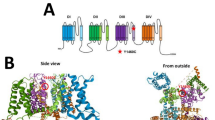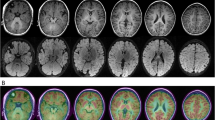Abstract
The SCN1A gene with 1274 point mutations in the coding regions or genomic rearrangements is the most clinically relevant epilepsy gene. Recent studies have demonstrated that variations in the noncoding regions are potentially associated with epilepsies, but no distinct mutation has been reported. We sequenced the 5′ upstream region of SCN1A in 166 patients with epilepsy and febrile seizures who were negative for point mutations in the coding regions or genomic rearrangements. A heterozygous mutation h1u-1962 T > G was identified in a patient with partial epilepsy and febrile seizures, which was aggravated by oxcarbazepine. This mutation was transmitted from the patient’s asymptomatic mother and not found in the 110 normal controls. h1u-1962 T > G was located upstream the most frequently used noncoding exon and within the promoter sequences. Further experiments showed that this mutation decreased the promoter activity by 42.1 % compared with that of the paired haplotype (P < 0.001). In contrast to the null expression that results in haploinsufficiency and severe phenotype, this mutation caused relatively less impairment, explaining the mild epilepsy with incomplete penetrance. The antiepileptic drug-induced seizure aggravation in this patient suggests clinical attention for mutations or variations in noncoding regions that may affect SCN1A expression.



Similar content being viewed by others
References
Plummer NW, Meisler MH (1999) Evolution and diversity of mammalian sodium channel genes. Genomics 57:323–331
Meisler MH, Kearney JA (2005) Sodium channel mutations in epilepsy and other neurological disorders. J Clin Invest 115:2010–2017
Scheffer IE, Berkovic SF (1997) Generalized epilepsy with febrile seizures plus: a genetic disorder with heterogeneous clinical phenotypes. Brain 120:479–490
Escayg A, MacDonald BT, Meisler MH, Baulac S, Huberfeld G, An-Gourfinkel I, Brice A, LeGuern E et al (2000) Mutations of SCN1A, encoding a neuronal sodium channel, in two families with GEFS + 2. Nat Genet 24:343–345
Wallace RH, Scheffer IE, Barnett S, Richards M, Dibbens L, Desai RR, Lerman-Sagie T, Lev D et al (2001) Neuronal sodium-channel alpha1-subunit mutations in generalized epilepsy with febrile seizures plus. Am J Hum Genet 68:859–865
Claes L, Del-Favero J, Ceulemans B, Lagae L, VanBroeckhoven C, DeJonghe P (2001) De novo mutations in the sodium-channel gene SCN1A cause severe myoclonic epilepsy of infancy. Am J Hum Genet 68:1327–1332
Ohmori I, Ouchida M, Ohtsuka Y, Oka E, Shimizu K (2002) Significant correlation of the SCN1A mutations and severe myoclonic epilepsy in infancy. Biochem Biophys Res Commun 295:17–23
International League Against Epilepsy Consortium on Complex Epilepsies (2014) Genetic determinants of common epilepsies: a meta-analysis of genome-wide association studies. Lancet Neurol 13:893–903
Kasperaviciute D, Catarino CB, Matarin M, Leu C, Novy J, Tostevin A, Leal B, Hessel EV et al (2013) Epilepsy, hippocampal sclerosis and febrile seizures linked by common genetic variation around SCN1A. Brain 136:3140–3150
Martin MS, Tang B, Ta N, Escayg A (2007) Characterization of 5′ untranslated regions of the voltage-gated sodium channels SCN1A, SCN2A, and SCN3A and identification of cis-conserved noncoding sequences. Genomics 90:225–235
Long YS, Zhao QH, Su T, Cai YL, Zeng Y, Shi YW, Yi YH, Chang HH et al (2008) Identification of the promoter region and the 5′ -untranslated exons of the human voltage-gated sodium channel Nav1.1 gene (SCN1A) and enhancement of gene expression by the 5′ -untranslated exons. J Neurosci Res 86:3375–3381
Dong ZF, Tang LJ, Deng GF, Zeng T, Liu SJ, Wan RP, Liu T, Zhao QH et al (2014) Transcription of the human sodium channel SCN1A gene is repressed by a scaffolding protein RACK1. Mol Neurobiol 50:438–448
Nakayama T, Ogiwara I, Ito K, Kaneda M, Mazaki E, Osaka H, Ohtani H, Inoue Y et al (2010) Deletions of SCN1A 5′ genomic region with promoter activity in Dravet syndrome. Hum Mutat 31:820–829
Singh R, Scheffer IE, Crossland K, Berkovic SF (1999) Generalized epilepsy with febrile seizures plus: a common childhood-onset genetic epilepsy syndrome. Ann Neurol 45:75–81
Liao WP, Shi YW, Long YS, Zeng Y, Li T, Yu MJ, Su T, Deng P et al (2010) Partial epilepsy with antecedent febrile seizures and seizure aggravation by antiepileptic drugs: associated with loss of function of Nav1.1. Epilepsia 51:1669–1678
Dravet C, Bureau M, Oguni H, Fukuyama Y, Cokar O (2005) Severe myoclonic epilepsy in infancy: Dravet syndrome. Adv Neurol 95:71–102
Long YS, Shi YW, Liao WP (2009) Conservation-based prediction of the transcription regulatory region of the SCN1A gene. Prog Nat Sci 12:1675–1681
Farh KK, Marson A, Zhu J, Kleinewietfeld M, Housley WJ, Beik S, Shoresh N, Whitton H et al (2015) Genetic and epigenetic fine mapping of causal autoimmune disease variants. Nature 518:337–343
Urak L, Feucht M, Fathi N, Hornik K, Fuchs K (2006) A GABRB3 promoter haplotype associated with childhood absence epilepsy impairs transcriptional activity. Hum Mol Genet 15:2533–2541
Meng H, Xu HQ, Yu L, Lin GW, He N, Su T, Shi YW, Li B et al (2015) The SCN1A mutation database: updating information and analysis of the relationships among genotype, functional alteration, and phenotype. Hum Mutat 36:573–580
Shi YW, Yu MJ, Long YS, Qin B, He N, Meng H, Liu XR, Deng WY et al (2012) Mosaic SCN1A mutations in familial partial epilepsy with antecedent febrile seizures. Genes Brain Behav 11:170–176
Yu FH, Mantegazza M, Westenbroek RE, Robbins CA, Kalume F, Burton KA, Spain WJ, McKnight GS et al (2006) Reduced sodium current in GABAergic interneurons in a mouse model of severe myoclonic epilepsy in infancy. Nat Neurosci 9:1142–1149
Rogawski MA, Löscher W (2004) The neurobiology of antiepileptic drugs for the treatment of nonepileptic conditions. Nat Med 10:685–692
Zeng T, Dong ZF, Liu SJ, Wan RP, Tang LJ, Liu T, Zhao QH, Shi YW et al (2014) A novel variant in the 3′UTR of human SCN1A gene from a patient with Dravet syndrome decreases mRNA stability mediated by GAPDH’s binding. Hum Genet 133:801–811
Baulac S, Gourfinkel-An I, Nabbout R, Huberfeld G, Serratosa J, Leguern E, Baulac M (2004) Fever, genes, and epilepsy. Lancet Neurol 3:421–430
Acknowledgments
We thank all patients, their families, and physicians for participating in this study. We are grateful to the He Shanheng Charity Foundation for contributing to the development of this institute.
Author information
Authors and Affiliations
Corresponding authors
Ethics declarations
Funding
This work was supported by the National Natural Science Foundation of China (grant nos. 81071045, 81271434, 81571273, 81571274, and 81501124), Department of Education of Guang dong Province (grant nos. 2013CXZDA022, 2013KJCX0156, and 2012KJCX009), Foundation for High-level Talents in Higher Education of Guangdong (grant no.2013-167), Yangcheng Scholar Research Project of Guangzhou Municipal College (grant nos.12A016S and 12A017G), Science and Technology Project of Guangzhou (grant nos. 2014 J4100069 and 201508020011), and Collaborative Innovation Center for Neurogenetics and Channelopathies. The funders had no role in study design, data collection and analysis, decision to publish, or preparation of the manuscript.
Additional information
Qu-Wen Gao and Li-Dong Hua are co-first author due to their equal contribution to this work
Electronic supplementary material
Below is the link to the electronic supplementary material.
Supplementary Table 1
(DOCX 16 kb)
Rights and permissions
About this article
Cite this article
Gao, QW., Hua, LD., Wang, J. et al. A Point Mutation in SCN1A 5′ Genomic Region Decreases the Promoter Activity and Is Associated with Mild Epilepsy and Seizure Aggravation Induced by Antiepileptic Drug. Mol Neurobiol 54, 2428–2434 (2017). https://doi.org/10.1007/s12035-016-9800-y
Received:
Accepted:
Published:
Issue Date:
DOI: https://doi.org/10.1007/s12035-016-9800-y




